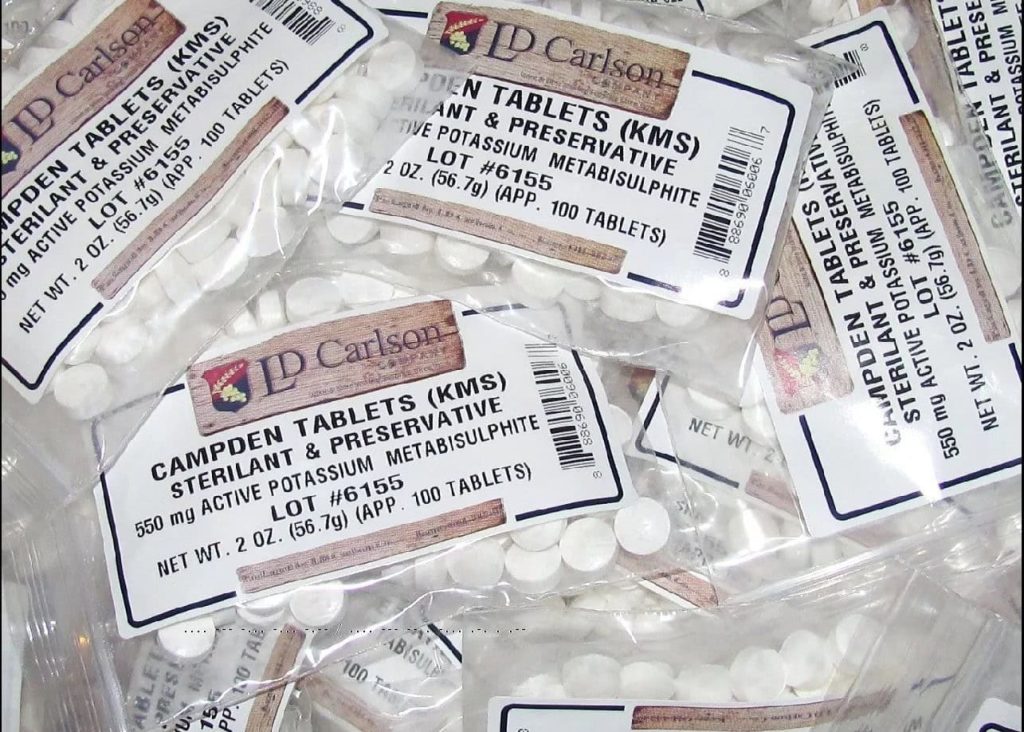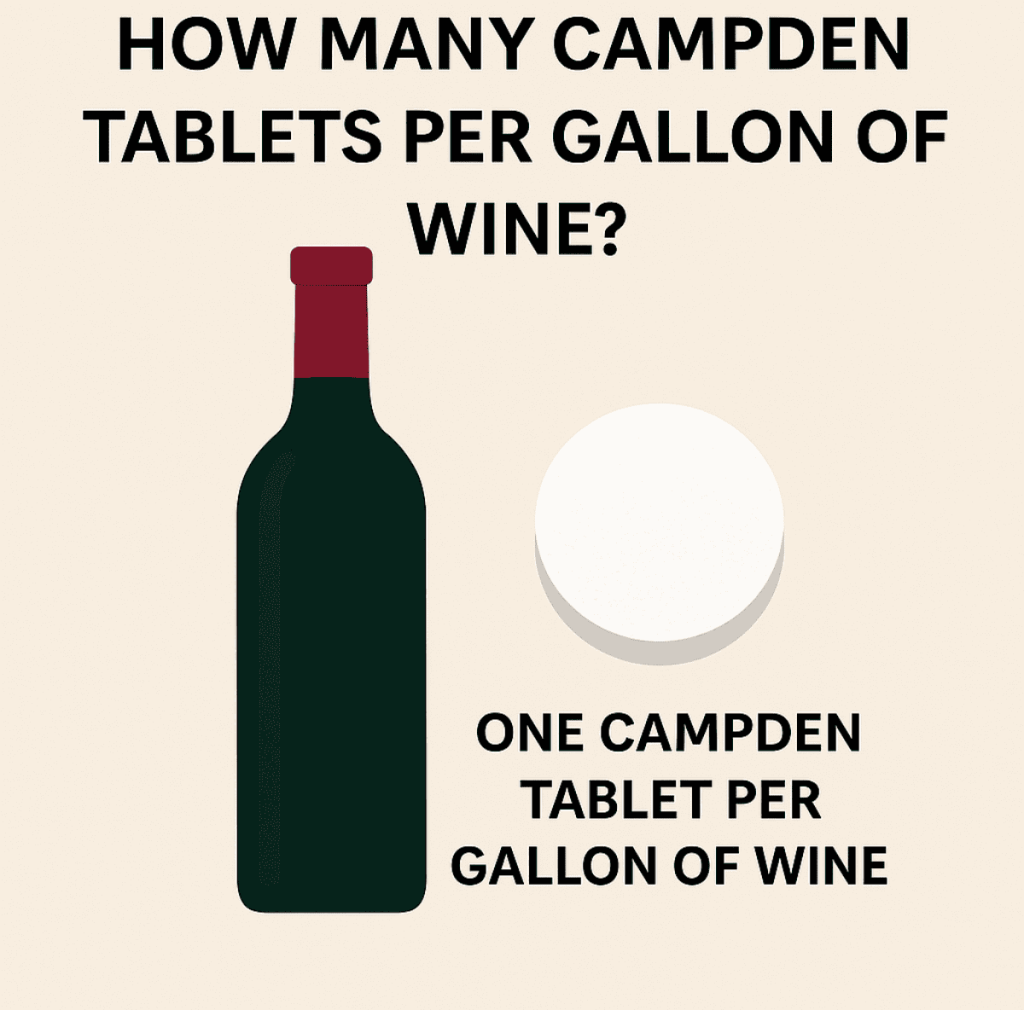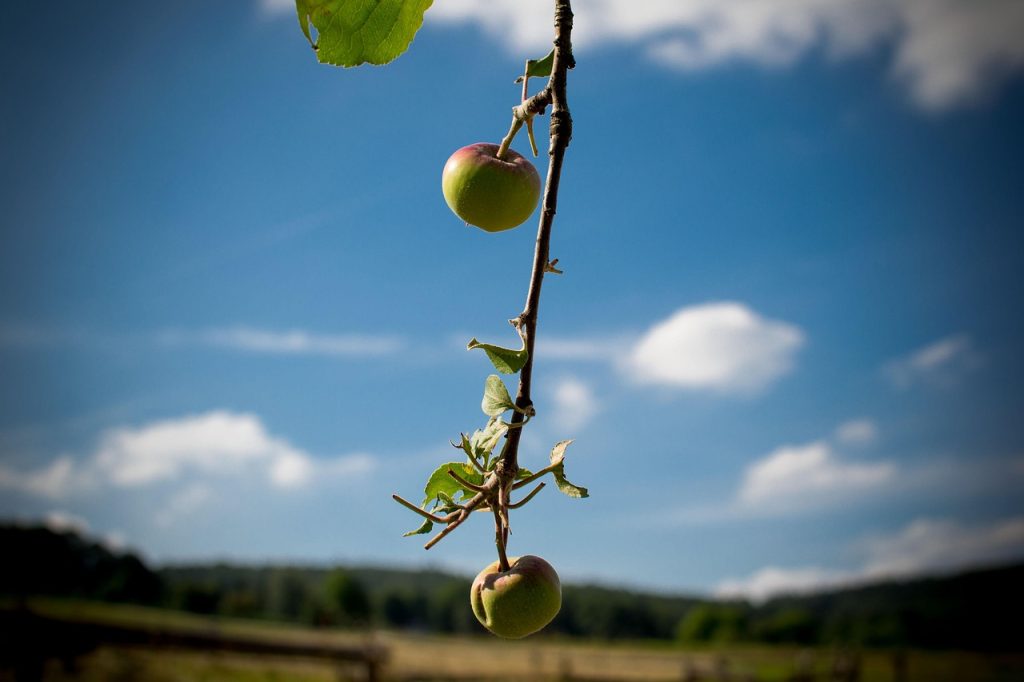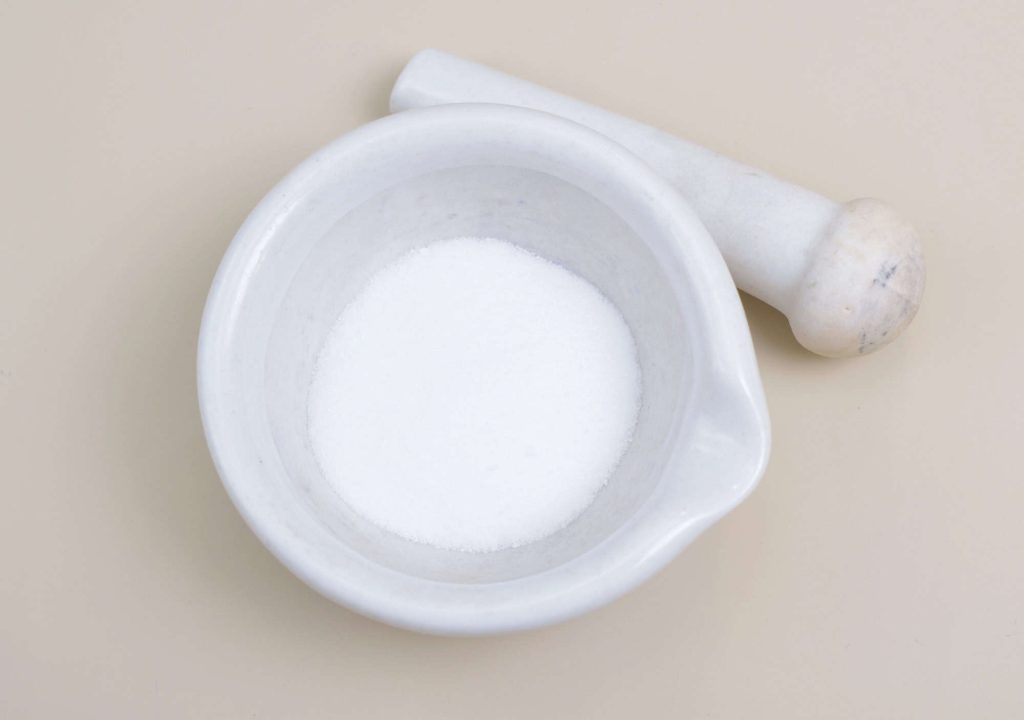Campden Tablets Dosage Guide
Campden tablets are one of the most commonly used ingredients in home winemaking and cider production. You’ll find them referenced in virtually every wine recipe, discussed in winemaking books, and recommended in fermentation instructions across the board. Understanding the proper dosage and timing is crucial for producing successful and stable beverages.
What Are Campden Tablets?
Campden tablets are compressed tablets containing either potassium metabisulfite (K-meta/KMS) or sodium metabisulfite (Na-meta/SMS). When dissolved in liquid, they release sulfur dioxide (SO₂), which acts as both an antimicrobial agent and an antioxidant. Each standard Campden tablet typically contains about 0.44 grams of metabisulfite, equivalent to 1/16 teaspoon of powder.
Important note: Campden tablets and potassium metabisulfite powder are completely interchangeable. The powder form is often cheaper and doesn’t require crushing, but it requires careful measurement according to the manufacturer’s instructions, rather than using pre-measured tablets.

How Many Campden Tablets Per Gallon of Wine?
One of the most frequently asked questions in winemaking is about proper Campden tablet dosage. Whether you’re sanitizing fresh grape juice, stabilizing finished wine, or preparing for bottling, the dosage remains remarkably consistent. Understanding the proper timing and application of Campden tablets is essential for producing quality, stable wine that will age well and resist spoilage.
1 Campden tablet per gallon for all standard uses:

Timing guidelines
Pre-fermentation (Most common):
- Add 1 tablet per gallon to fresh grape juice or must
- Cover with only a thin towel or cloth—never seal the container
- Wait exactly 24 hours before adding yeast
- This kills wild microorganisms while preserving the option to add cultured yeast
Add Campden tablets pre-fermentation if you’re working with fresh juice, grapes, or unpasteurized must. Skip if you’re using commercial, pasteurized, or pre-sulfited juice.
Post-fermentation (Recommended for wines that will age):
- Add 1 tablet per gallon after fermentation finishes
- Can be added during racking to the secondary vessel
- Protects wine during the clearing and aging process
Add Campden tablets post-fermentation if you plan to bulk age (in a carboy for several months), if you’re racking into secondary vessels, or if you want to prevent oxidation and spoilage during storage. Skip if you’re bottling quickly and the wine won’t be stored long-term, or if you’ve already added enough SO₂ during previous stages and tested levels.
Before bottling (Recommended if aging in a bottle):
- Add 1 tablet per gallon 24-48 hours before bottling
- Essential for long-term storage and preventing spoilage
- Can be added simultaneously with potassium sorbate if back-sweetening
Add Campden tablets before bottling if you’re bottling for long-term storage or if you’re back-sweetening (in which case, combine with potassium sorbate). Skip if your wine has adequate free SO₂ levels (as tested) already.
How Many Campden Tablets Per Gallon of Cider?
Cider follows identical guidelines to wine. This consistency makes Campden tablets a versatile tool for anyone interested in making multiple types of beverages.

Standard Cider Dosage
1 Campden tablet per gallon for all cider applications:
- Fresh apple juice sanitization
- Post-fermentation stabilization
- Pre-bottling preservation
While cider follows the same basic dosage guidelines as wine, several important differences make Campden tablet usage even more critical for cider makers:
- Wild fermentation concerns: Cider is more often made from unpasteurized, wild-fermented juice, especially by hobbyists. This makes pre-fermentation Campden treatment absolutely essential to control unwanted microbes and prevent acetobacter contamination (which causes vinegar spoilage)
- Lower natural protection: Apple juice typically has lower tannin and acid content than grape juice, making it more sensitive to oxidation. This means sulfite management requires extra attention, particularly for long-aged ciders
- pH advantages: Cider pH is usually more favorable (below 3.5) for effective SO₂ activity, making sulfites actually more effective in cider than in high-pH wines
- Dosage flexibility: Some experienced cider makers use slightly lower post-fermentation doses (0.5-0.75 tablets per gallon) to preserve subtle apple aromas, though beginners should stick with the standard 1 tablet per gallon
- Acetobacter protection: Yeasts are naturally resistant to Campden tablets, but acetobacter are easily killed, making treatment especially important in cider production where vinegar spoilage is a constant threat
- Sweet ciders require both Campden tablets AND potassium sorbate to prevent re-fermentation
Why Are Campden Tablets Used in Cider and Winemaking?
Campden tablets serve multiple essential functions in winemaking and cider production.
They sanitize fresh juice before fermentation by eliminating wild yeasts and bacteria, ensuring a clean start for your cultured yeast.
After fermentation, they preserve finished wine and cider by preventing oxidation and spoilage, making them crucial for bottling and long-term storage.
Beyond beverage production, Campden tablets create effective sanitizing solutions for equipment cleaning and act as antioxidants when transferring wine between containers by trapping oxygen before it can cause damage.
They’re also valuable for water treatment, with one tablet effectively dechlorinating 20 gallons of municipal water.
In cider production specifically, they provide critical control against acetobacter, the bacteria responsible for vinegar spoilage, while protecting wine quality during bulk aging processes.

What They CANNOT Do
Many beginners mistakenly believe Campden tablets can reliably stop an active fermentation. This is a dangerous misconception. To halt fermentation with sulfites alone would require so many tablets that the wine would become undrinkable.
The science: Campden tablets can only stun yeast temporarily. The yeast population will eventually recover and continue fermenting if provided with enough fermentable sugars, sometimes after bottling, leading to dangerous pressure buildup or exploding bottles.
To truly stop fermentation for back-sweetening, you must use Campden tablets AND potassium sorbate together. Without potassium sorbate, the yeast will simply repopulate.
Critical Usage Guidelines
Never seal your fermenter immediately after adding Campden tablets. This is one of the most common causes of fermentation failure.
- Add crushed Campden tablets to your juice or must
- Cover the fermenter loosely with a clean towel or cloth (not an airtight lid)
- Wait 24 hours to allow sulfur dioxide gas (SO₂) to dissipate
- Then pitch your yeast and seal with an airlock as usual
Sealing the container too soon traps sulfite gas, which can inhibit or kill yeast, even after 24 hours, leading to failed or sluggish fermentation.
Proper Tablet Preparation
- Crush tablets into a fine powder for quicker and more complete dissolution
- Dissolve the powder in a small amount of warm water (not boiling) before adding to your batch
- Stir thoroughly to ensure even sulfite distribution
- Avoid leaving undissolved chunks on the bottom, they can cause localized over-sulfiting
Scaling Campden Tablets For Batch Preparation
- 1 gallon (3.8 L): 1 tablet
- 5 gallons (19 L): 5 tablets
- 6-gallon carboy (22.7 L): 6 tablets
- Per liter: ~0.25 tablets
Alternative measurement (using powder form)
If using potassium metabisulfite powder instead of tablets, use approximately 1/16 to 1/8 teaspoon per gallon, leaning closer to 1/8 teaspoon for practical home use. Exact amounts can vary slightly between manufacturers; always follow product-specific instructions.
Most winemakers prefer tablets for convenience and consistency.
